When 26-year-old psych student Danielle Spangler visited Palo Alto Veteran Affairs Hospital for a training interview, she never expected Dr. Geoffrey Lane to pull out a fluffy, white baby seal. Its eyelashes fluttered as it met her eyes. “She winked and I screamed!” she told me.

Danielle had just met Paro, the most famous therapy robot in the world, its soft body and huggable shape designed to resemble a baby seal (or a heavily swaddled baby). This effect is heightened as the charger’s designed to look like a child’s pacifier. Today, the robot seal is Danielle’s baby; her team uses it to comfort people dealing with dementia.
She calls it Betty.
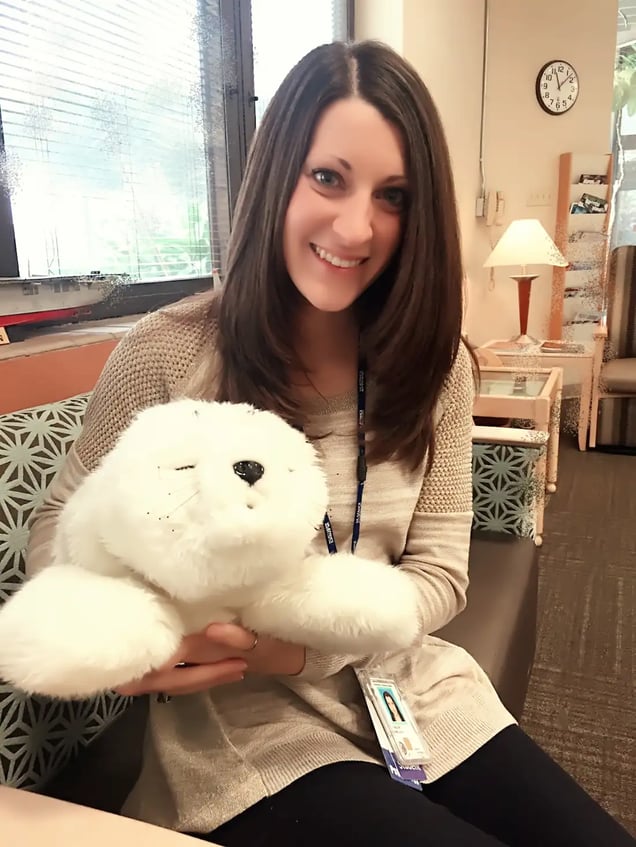
Danielle Spangler with ‘Betty’
Betty lives inside a cupboard at nursing station one, a bottle of disinfectant and wet wipes discreetly next to her. She gets cleaned after each interaction with a patient, and this means she smells faintly of iodine.
She’s loaded with sensors that make her something ‘more’ than a cute toy. She reacts to light and sound, and can be taught to recognize her name. She’ll turn her head towards you when called. Nothing creaks when she nuzzles against you, and she feels warm, like she’s breathing.
Paro, launched in 2003, used to be a pioneer in the therapy pet robotics space, but she now has younger, thinner competition. In late 2015, Hasbro launched the $99 Joy For All Companions: three robotic therapy cats in white, grey and tawny. That’s 60 times less than Betty (we’re now on version 8), which retails for $6,000.

Danielle’s hospital invested in some of these cats to see how residents respond, but Dr. Lane’s not convinced. “We thought it was creepy,” he said, and explained that people don’t respond well to cat- and dog-styled robots, as they’re so familiar with the real deal.
That’s why Betty looks like a seal; most people have zero hands-on time with seals, so they have no major impressions about their behaviours.
You might recognize Betty if you’re one of the millions who’ve watched Aziz Ansari’s Master of None show on Netflix. Betty’s the seal from episode eight, ‘Old People.’ In the show, Ansari’s friend Arnold Baumheiser inherited her after his grandfather died, and eventually gifted it to his elderly landlord when they formed a connection.

Arnold Baumheiser with Paro in Master of None
The robot therapy landscape
The general impression of anyone who hasn’t spent time with Betty is that she’s inherently ridiculous. Why have an expensive toy for the elderly? What a waste of space and money. Why not invest cash into healthcare robotics, which are giving rise to humanoid robots, such as the walking Asimo, and the Robear that can lift patients in and out of bed?
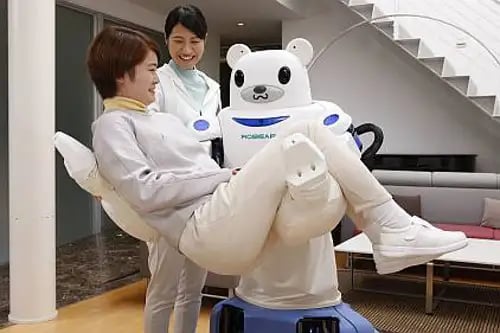
Robear therapy robot
There have been a number of research projects into robotic pets for the last decade, but Paro and Hasbro’s cat are currently the only commercially available treatment models.

Ollie the Otter at MIT
On the horizon might be Ollie the Otter, a cuddly robot project that students at MIT built in 2013; note that Ollie’s shaped pretty much like the Paro. Pets that have come and gone include Keepon, a canary yellow “Peep” styled pet; and Popchilla, a green, floppy-eared alien that’s comforting to kids with autism.
These might all seem a little ridiculous, but they’re built off the back of healthcare research. “It was found that use of Paro consistently resulted in increased observed positive affective and behavioral indicators, with concomitant decreases observed in negative affective and behavioral indicators,” Dr. Lane wrote in a recent paper.
The use of real-life animals for therapy purposes has been well documented over the last 50 years, but the reality of having animals in a clinical setting is unlikely. Sure, short visits with trained animals are something they can arrange, but facilities aren’t set up to deal with full-time pets. A robot pet is a lot easier.
Experiencing Paro in real time
The Veterans Hospital, Palo Alto Jan 2016

Patient at the VA Hospital. Photographer: Zara Stone
Three veterans slouched in high-backed wheelchairs, their eyes listlessly watching a gameshow hostess place neon letters on a screen. Their skin is crepe paper thin, their hands tremble. We approached them with Betty. One guy looked away, another stroked her briefly, then ignored her.
Mr. Pierce, a frail man around 85-years-old, held her on his lap, cooing gently. “She’s a sweetheart, yes you are, yes you are,” he said.
Danielle asked if he’d seen a seal before. At first, he shook his head. Then he spoke, his voice raw. “I was stationed off Alaska and there were seals and foxes there.” He started shaking, eyes watering. “We got the carcases, some thought they were worth more dead than alive.” He stared in silent horror, and a nurse moved to comfort him. His hands gripped Betty’s fur.
We move on, a little shaken. Danielle said he’s never mentioned this before, but it’s a good thing for patients to get some of their memories back… even the sad ones. She holds a small pad, where she ticked off which patients agreed to spend time with Betty. Not all do, she said, as some know Betty’s not real and don’t want to pretend.
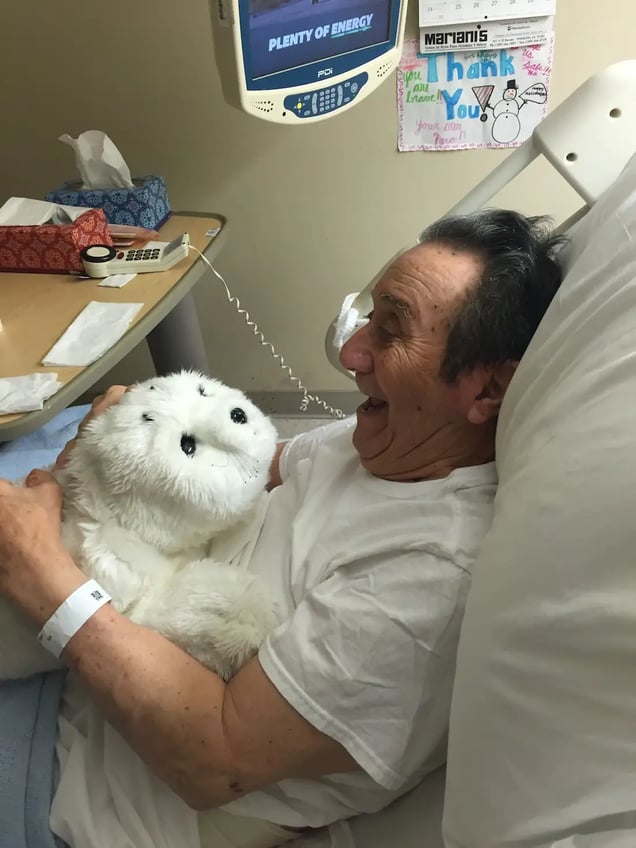
Patient at the VA Hospital. Photographer: Zara Stone
We move from room to room. Some men screamed in their beds, others gazed blankly at the door. Half the patients refused to touch Betty; some don’t care, some are afraid, and some are angry. But the ones that do seem to take pleasure in her long-lashed eyes and snuggly frame.
Danielle told me that Betty’s a great way to boost the patients’ moods, and can be helpful when they’re being aggressive; she has a calming influence. It’s hard to quantify how much, as a lot of the data is observational.
“A shift is happening now,” she said, describing how the healthcare model is evolving, with e-therapy and telemedicine becoming more prevalent. And this is necessary since advances in technology have led to a rapidly ageing population. An estimated 26% of Americans will be 65 years or older in 2050. Technology needs to catch up so there’s a support system in place.
The Hustle’s Cool or Douche Test
We wanted to put therapy robots to the cool or douche test, but that was before spending time at the hospital and seeing patients react. We don’t like to be too serious here, but we also get that these robots are trying to address serious problems, and we don’t want to mock the people aiming for solutions.
But the robot pets have to be effective to get respect, so – with respect – here’s our bonafide cool or douche analysis.
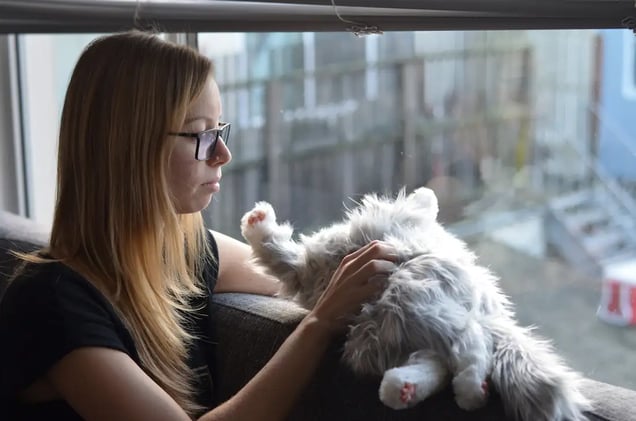
Hasbro’s Joy For All Companion Pet, $99
First Impression
This looks like a cat a 7-year-old would draw. It has all the cat-like features you’d expect; button nose, cute ears, whiskers, but there’s something that just feels “wrong” about it.
It’s clearly a toy, even if it’s hard to pinpoint why exactly. The weight is nice, it feels solid to hold, and like it would be hard to break. But the fur is coarse and the shape is very rigid, so no cuddle points there.
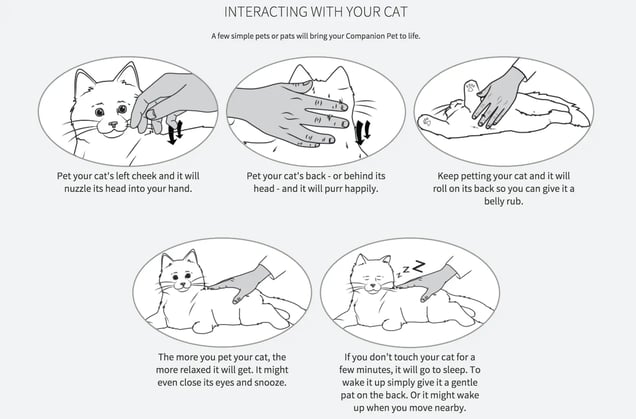
The cat turns on via a small switch concealed in its belly, and you can set it to “on” or “mute”, the difference being that it will move around in mute, but won’t purr and yelp.
The cat has a number of sensors installed that respond to different actions. Rub it behind its ears and it starts purring, a low comforting growl that makes you feel like you’ve achieved something. It also meows for attention. Stroking it in different places can cause it to lift its paw and roll over. But this also causes a weird clicking mechanical noise — daka-daka-daka-daka — which is very disconcerting. I checked, and mine wasn’t faulty, this is how this is meant to sound: after all, it’s a $99 robot covered in faux fur.
People laughed when they saw it, and designated it as weird, distracting, and fake.
Use over time
I had the cat for two weeks. I named him Cat, I’m original like that. At first Cat stayed on my couch or by the table, peering at me with his black unblinking eyes. I tried working with him on my knee, but his clicking and yipping were too distracting. And when I sat with him turned off I felt ridiculous.
But as time passed I found myself feeling oddly comforted by Cat. My boyfriend was out of town, and I spent the evening binge-watching Galavant while stroking Cat in my pajamas. Yes, I became that crazy lady who stays at home playing with her robotic pussycat. Oops.
But Cat’s weight and odd clicking movements were nice to have in an empty apartment, especially when you have those odd moments of paranoia that someone’s breaking in. Not that a robotic cat could deal with that, but as I irrationally wedged a hoverboard against my front door, I held Cat under my arm… for support.
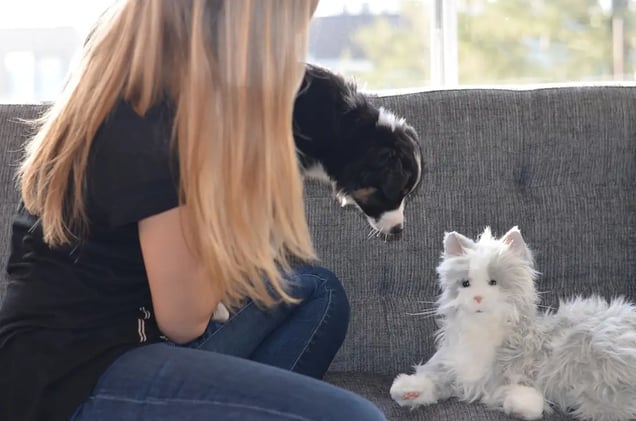
Overall thoughts
I know that I’m not the target demographic for the Companion pet, it’s intended for lonely seniors. But using Cat and seeing how it made me feel comforted made me realize this could be of real benefit to people. Sure, it’s super fake, but that doesn’t mean it doesn’t make you feel a little bit better.
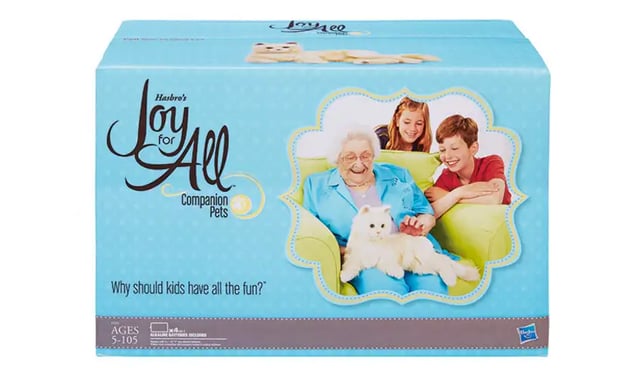
Rating: Needs improving
I’m going to abstain from rating robotic therapy pets in the usual Cool or Douche way. Sure, the Hasbro Companion Pet has a long way to go before it replicates reality, but we need to support the direction they’re moving in.
It doesn’t really have value for millennials right now, but I could see my grandmother liking this a lot. And it’s an investment in the future, as our generation is expected to need a lot of health care. We’ll live longer, but there won’t be enough nurses, so robots like these – once suitably evolved – will be very necessary for our benefits.
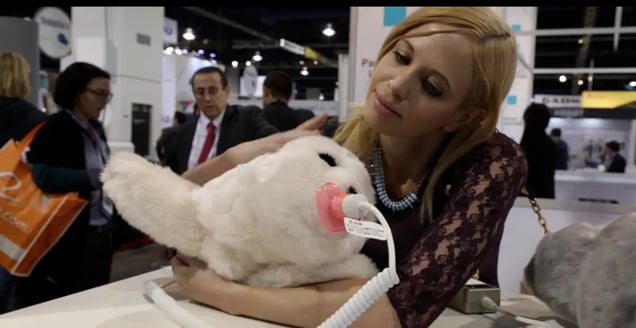
The Paro Seal, $6,000
First impressions
Cute, cuddly and how on earth will you keep it clean? White seems such an impractical color for use in a hospital. The Paro is very strokable, and its weight and warmth make it feel very natural to hold. The tiny little movements it makes – a twitch here, a yawn there – created an “alive” feel. Again, I have no real context for baby harp seals (which is why it was designed like one) but the behaviour felt very seal-like.
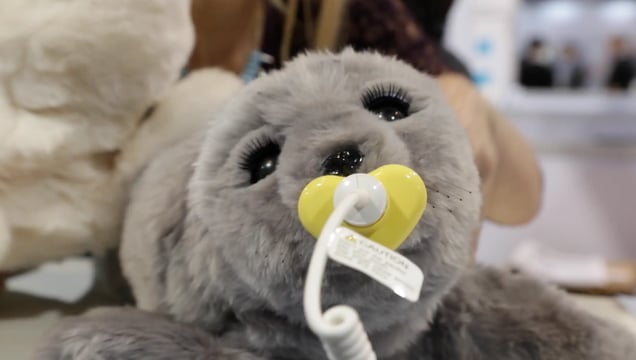
Use over time
I spent a couple of hours with the Paro in a hospital context and have seen it before in trade shows. So the experience I’m using here is the results from the observations clinical staff have taken on how the Paro can help boost a patient’s mood and give them comfort. The big takeaway was that they need this BEFORE an incident, as once someone starts having an episode, the Paro won’t have a noticeable effect.
There are different versions of the Paro, and the clinical one for hospitals is sturdier and doesn’t react to negativity as highly (for example, patients poking its eyes). I’ve heard rumors that new models are being planned, equipped with a matching app and Bluetooth sensor to capture more data about efficacy and patient reactions (waiting on confirmation).
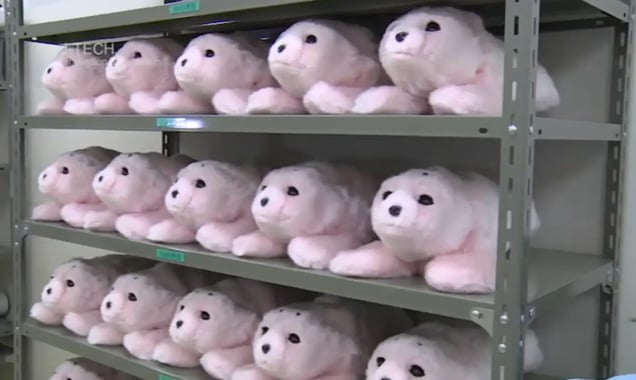
Overall Thoughts
The cuddly Paro is a testament to that. With hospitals understaffed and more time given to physical needs – changing, weighing, medicating – there’s less and less time to just be, to offer company to lonely adults.

Rating
Can create great benefits and boost patient mood. But needs to be cheaper, so more people can access this.
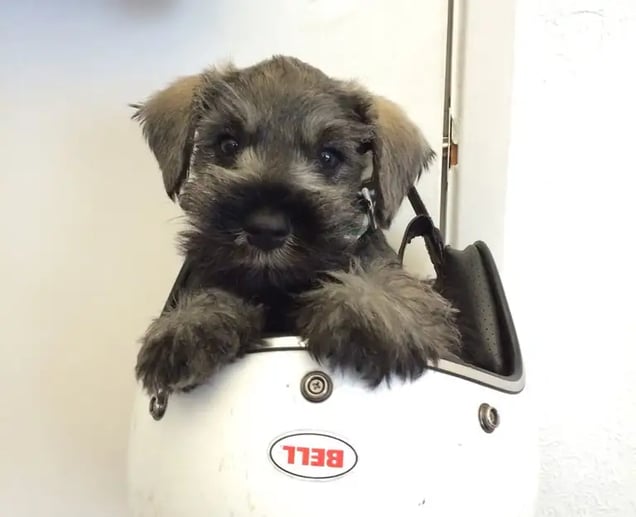
Gus, The Hustle office pet, around $1,000 a year
First impressions:
Clearly NOT a robot, but as we have an office dog, I figured we include him in the assessment of how (robot) animals can be therapeutic. The cuddliest, cutest dog you’ve ever seen. Always interested in what’s going on, excitable and ready to eat your leftovers.
Use over time
Teething Gus is not fun to be around, and ankle biting is something everyone had to put up with. He likes to play, but that can be distracting, and, like any kid, he wants a lot of attention. Which we love to give him, but we don’t always have the time when deadlines loom.
Overall thoughts
Creates the most happiness and natural response, but also demands the most from his owner. Wonderful to have around, but a lot of energy needed to keep up with him and create a home he’ll be happy in.
Cool/Douche rating
Cool… if you have the time, money, and space available to care for a pet.
The future of robotic therapy
Having robots that are able to take care of us – and befriend us – is both a necessity and an ethical dilemma. Will we be able to evolve the technology fast enough, and what does it say about us as people that we’re placing the role/burden of human emoting experiences onto robots?
But this could be just the beginning. Dr. Lane believes we will have a future filled with social robotics, and that Habros’ offering is a prelude. “It’s Hasbro’s direct assault on Paro,” he said. “We’ll see more social robots than therapy animals in hospitals.”
With life expectancy rising, and a tech-heavy, time-poor generation growing, social robotics are here to stay. And squeal, purr, and growl.
We need to support this; these are our future caretakers we’re talking about…
